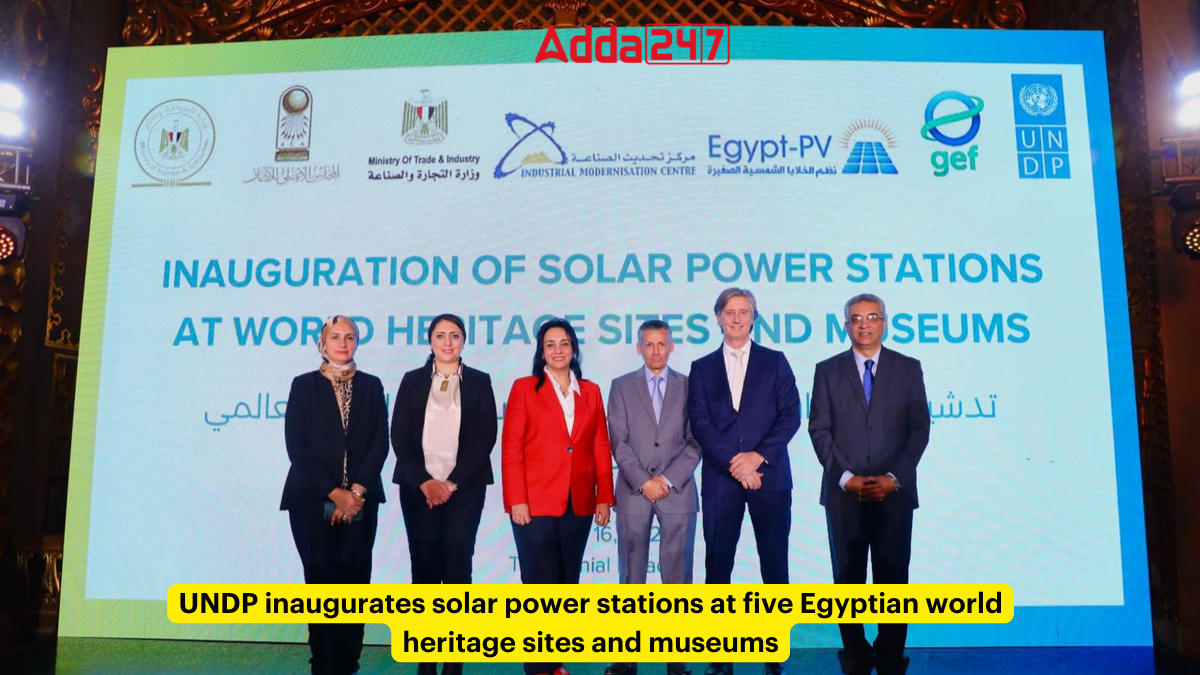In a landmark initiative for sustainable energy and environmental conservation, Egypt has taken a significant step forward. In a ceremony at the Manial Palace, the Ministry of Tourism and Antiquities, represented by the Supreme Council for Antiquities (SCA), in collaboration with the Industrial Modernization Center and the United Nations Development Programme (UNDP) in Egypt, officially inaugurated solar power stations at five renowned Egyptian world heritage sites and museums.
The Egypt PV Project: Pioneering Sustainable Energy
This initiative is part of the Egypt PV project, a groundbreaking effort aimed at fostering the market for rooftop small-scale photovoltaic (PV) systems in Egypt. Funded by the Global Environment Facility (GEF) and the European Union, the project operates under the auspices of the UNDP in partnership with Egypt’s COP27 Presidency. It represents a strategic move towards Egypt’s energy transition, in line with Sustainable Development Goals 7 (Affordable and Clean Energy) and 13 (Climate Action), as well as Egypt’s Vision 2023.
Locations and Capacities
The solar power stations are installed at strategically significant locations:
Giza Plateau’s Visitor Center: A landmark site for Egypt’s tourism, the Giza Plateau is home to the iconic Pyramids and the Sphinx.
Manial Palace, Cairo: This historical palace is a fusion of Ottoman, Moorish, Persian and European Rococo styles.
Sharm El Sheikh Museum: Located in one of Egypt’s major tourist destinations, known for its beaches and clear waters.
National and Royal Jewelry Museums in Alexandria: These museums are cultural treasures showcasing Egypt’s rich history.
These stations boast a total capacity of 325 kW, with the photovoltaic systems estimated to generate 520 MW.hr/year. This is expected to reduce around 295 tons/year of carbon dioxide equivalent in greenhouse gas emissions, marking a significant environmental impact.
Environmental Impact and Carbon Footprint Reduction
The implementation of these solar power stations is a major stride in reducing the carbon footprint of Egypt’s key cultural and historical sites. It not only represents an advancement in the use of renewable energy sources but also demonstrates a commitment to preserving the environment while maintaining the integrity of these heritage sites.
Promoting Small-Scale Renewable Energy
The Egypt PV project focuses on promoting small-scale renewable energy systems and energy-efficient appliances. This initiative is instrumental in achieving national Nationally Determined Contribution (NDC) targets and renewable energy goals. It opens avenues for similar projects across other sectors in Egypt, setting a precedent for integrating renewable energy in heritage conservation.
Important Questions Related to Exams
- What is the name of the project responsible for installing solar power stations at Egyptian world heritage sites and museums?
- Which global and European organizations funded the Egypt PV project?
- How does the Egypt PV project align with Egypt’s Vision 2023?
- What is the total capacity of the solar power stations installed under the Egypt PV project?
- What are the names of the locations where the solar power stations have been installed?
- What are the Sustainable Development Goals associated with the Egypt PV project?
- How does the Egypt PV project exemplify the integration of renewable energy in heritage conservation?
Kindly share your responses in the comment section.



 Zelenskyy and Estonia’s New PM Discuss...
Zelenskyy and Estonia’s New PM Discuss...
 Ronald L. Rowe Jr. Named Acting Chief of...
Ronald L. Rowe Jr. Named Acting Chief of...
 Rahaab Allana Honored with French Arts a...
Rahaab Allana Honored with French Arts a...
